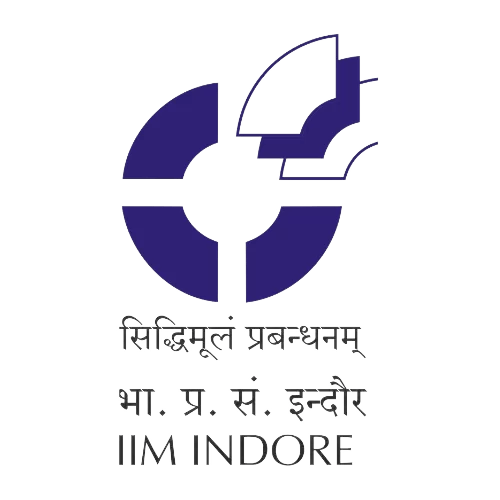Table of Contents
Aeronautical Engineering
Aeronautical Engineering (B.Tech.) is a four-year undergraduate program in aerospace engineering. Which requires a minimum of a 10+2 examination in science areas such as biology, math, and chemistry.
In India, the typical tuition expense for the degree is between INR 5000 and 2 Lacs for a four-year period. Engineers who work in government sectors are paid according to official scales, but engineers who work in private divisions are paid according to the scales set by the organization’s administration. Without extra incentives, the projected initial wage in government/public sectors such as HAL and NAL is INR 8,000 to INR 10,000. Graduates working in the private sector can expect to earn between INR 9,000 and INR 15,000 per month with benefits.
Engineering graduates with management degrees can expect to earn between INR 10,000 and 40,000 per month as a starting salary. Aside from countless other bonuses, skilled people working in the aviation industry might receive fringe benefits such as free travel for themselves and their families.
A large number of Indian aeronautical engineers work for NASA, and other countries such as the United States, the United Kingdom, France, and Germany hire aeronautical engineers. A candidate for aeronautical engineering should be physically fit because they may be required to operate at high speeds on a regular basis, especially when checking and maintaining aircraft during turnarounds.
B.Tech. Aeronautical Engineering is one of India’s most promising professional paths. This training not only provides exciting work opportunities with top corporations, but it also provides the once-in-a-lifetime experience of becoming a pilot and flying in space. ISRO hires the majority of these recently graduated aeronautical engineers. National Aeronautical Laboratory, Civil Aviation Department, Hindustan Aeronautics Limited (HAL), and Defence Research and Development Laboratories are among the other aircraft manufacturers and prestigious departments (DRDO).
Engineers can also seek greener pastures in other countries. National, international, public, and private airline services, as well as aircraft production facilities, all have openings.
Aeronautical engineers must have a keen sense of detail and the ability to solve problems. They should be able to speak effectively and have mathematical precision and computer skills. They’ll need to be good planners with a penchant for functioning under pressure.
Aeronautical Engineering is the study, design, and construction of flight-capable machinery, as well as the techniques for operating aeroplanes. This course prepares engineers to design, build, test, and analyse commercial and military aeroplanes, missiles, and spacecraft. Aerospace engineers work on aeroplanes, spacecraft, aerospace equipment, satellites, and missiles and are responsible for their research, design, and manufacture. They also work on innovative commercial aviation, defence, and space exploration technology.
What is the role of an Aeronautical Engineer?
Commercial and military aeroplanes, missiles, and spacecraft are designed, developed, tested, and manufactured by aeronautical engineers.
- Supersonic aircraft, helicopters, space shuttles, satellites, and rockets are among the astonishing technology developed and designed by aeronautical engineers.
- Aerospace engineers have helped to make things like fast postal delivery and moon travel possible.
- Engineers are trying to launch a space shuttle that will travel to the moon.
What does an Aeronautical Engineering graduate’s future hold?
Graduates in Aeronautical Engineering are knowledgeable in aerodynamics, aerospace materials, structures, propulsion, flight mechanics, and stability and control. They can work as a Design or Manufacturing Engineer in aviation manufacturing, defence services, or research and development firms.
Aeronautical Engineering Courses provide students with multi-faceted training in areas such as aircraft and missile manufacture and development. In the fields of defense and space science, an aeronautical engineer can design, test, and contribute to the development of new technologies.
Aeronautical engineers are mostly employed in India.
- The Defense Ministry and ISRO (Indian Space Research Organization).
- You can also use the website to hunt for employment openings.
- Hindustan Aeronautics Limited,
- the Civil Aviation Department,
- the National Aeronautical Laboratory,
- the Defense Research and Development Laboratories (DRDO),
- the National Aeronautical Laboratory (HAL).
Aeronautical engineers can find work in countries such as the United States, France, the United Kingdom, and Germany. As a result, aeronautical engineers from India and the rest of the world come to these countries. In NASA, engineers and technical experts make up a sizable percentage of the workforce.
Candidates begin their careers as graduate engineering trainees or junior Engineers. They are placed for training in the aircraft maintenance/overhaul or support division based on their performance, academic background, and aptitude. They are hired as assistant aircraft engineers or assistant technical officers after completing their training. For subsequent advancement, they must pass departmental exams. They may progress to administrative or executive positions, or they may work as consultants. In the maintenance of the aircraft frame, engine, electrical system, and other auxiliary equipment, aeronautical engineers are helped by aviation mechanics.
Highlights of BTech Aeronautical Engineering
| Course Level | Graduation |
|---|---|
| Duration | 4 years |
| Examination Type | Semester System/Year wise |
| Eligibility | 10+2 with science (biology, mathematics, and chemistry) |
| Admission Process | based on entrance exam (IITJEE) |
| Course Fee | INR 5,000 to 5 Lacs |
| Average Starting Salary | INR 3 to 15 lacs per annum |
| Top Recruiting Companies | ISRO (Indian Space Research Organization) and the Defense Ministry, National Aeronautical Laboratory, Civil Aviation Department, Hindustan Aeronautics Limited (HAL), etc. |
| Recruiting Companies Areas | Aerospace or Mechanical Engineering, Aeronautical Engineering, Colleges & Universities, Aircraft Design Companies, Wind Turbine Blade Design Companies etc. |
| Job Positions | Professor, Analysis Engineer, Instructor/Assistant Instructor, Design Engineer, Corporate Trainer cum Design Engineer, System Safety Management Engineer, Aerospace Chief Engineer, Lecturer & Professor etc. |
What does a BTech in Aeronautical Engineering entail?
Aerospace engineering oversees the planning, design, development, and research of the science behind the capabilities and physical qualities of rockets, airplanes, flying spacecraft, and space shuttles. Design, plan, structures, impetus, aerodynamics, streamlined characteristics, and frameworks are all covered by the approved courses of study and syllabi. The labs and workshops have been designed to take up the problems in industry and focus on research and development at certain points in the educational programs. The understudy works with the most recent versions of various analytical and design software.
Why should you pursue a BTech in Aeronautical Engineering?
Flight has traditionally been seen as the final frontier for humans. The ability of the bird to fly has always astounded us. As a result of our brains, we have conquered our restrictions and learned to fly. Aeronautical Engineering is concerned with aircraft and spacecraft principles. It entails studying aircraft and spacecraft designs in order to learn how to construct and repair craft.
Since the turn of the century, the sector has been quickly expanding. As more people travel by air, the sector will undoubtedly expand. Passenger traffic in developing countries like India is growing at a rate of more than 15% per year.
Aeronautical Engineering is a specialized and separate course that cannot be completed by students in other fields. As a result, an Aeronautical Engineer’s job is critical. The rest of the world looks up to them.
Aeronautics and aerospace provide several job opportunities in research, design, and vocations directly related to aircraft operation and maintenance. In reality, despite a huge number of accessible aeronautical work prospects, the country is currently experiencing a shortage of aeronautical engineers. As a result, pursuing aeronautical engineering contributes to the country’s aeronautics and aerospace growth.
Because aerospace is a tough and vital career that necessitates a great level of commitment, hard work, and dedication on the part of the professional, the industry’s most prestigious and largest businesses give significant wage packages to aeronautical engineers. In India, the starting salary is INR 500000, and it escalates to INR 10,00,000 – INR 12,00,000.
As an aviation engineer, you may be able to travel around the world without having to pay for it because your firm will.
Specializations in BTech Aeronautical Engineering
Many disciplines in Aeronautical Engineering are extremely significant and serve as specialization subjects. The following are some of the topics:
| specialisation | Description |
|---|---|
| Electronic Systems | Modern aerospace systems are set to rely even more heavily on electronic systems in the future, as autonomous unmanned flying vehicles, the development of electric aircraft, and the increased use of GPS to enhance flight efficiency and safety, increase society's dependence on electronics. |
| Aerospace Propulsion | Propulsion involves the study of the basic operation and design of aerospace propulsion devices, including both air-breathing engines and rocket power plants. Engine components such as inlets, pumps, and/or compressors, combustion chambers, turbines, and nozzles are also included. |
| Aerodynamics and Fluid Dynamics | Aerodynamics, a branch of physics that deals with the motion of air and other gaseous fluids and with the forces acting on bodies passing through such a fluid. Aerodynamics seeks, in particular, to explain the principles governing the flight of aircraft, rockets, and missiles |
| Instrumentation And Communication | Instrumentation engineers are expected to work with data acquisition and sensor systems, Calibrating and Maintenance of the equipment etc. There might be various measurement systems in the avionics industry, the primary variables being velocity, length, torque etc. |
| Navigational Guidance and Control Systems | Guidance, navigation and control is a branch of engineering dealing with the design of systems to control the movement of vehicles, especially, automobiles, ships, aircraft, and spacecraft. |
What is the admissions process for BTech Aeronautical Engineering?
Admission to the BTech Aeronautical Engineering program is either by an entrance examination or a quota system. The following is a step-by-step guide to getting admitted through entrance examinations.
Admission is determined through an entrance exam.
JEE Main and JEE Advanced, which are required for admission to most public universities, are the most popular engineering entrance tests in the country. Private institutes may also administer their own exams or rely on national or state-level entrance exams. The following is a guide to applying for entrance exam-based admission.
The institute announces the registration dates a few days ahead of time. An account must be created with basic information such as an email address and phone number.
Fill in the blanks: Carefully fill out the application form with all of the required information. It’s crucial to double-check that all of the details are proper.
Submission of Papers: Scan and submit all required documents, such as mark sheets. Documents must be uploaded in a certain format that the institute’s application page specifies.
Fee for application: A small application fee must be paid online at the time of application submission. All online payment methods are available.
Admit cards are distributed after all candidates have been assessed for eligibility. To be utilized on the day of the examination, the admit card must be downloaded and printed.
Exam: Study the curriculum and previous exam papers to prepare for the exam. Attend the examination on the scheduled date.
After a few weeks from the exam day, the results are announced. If an applicant passes the admission examinations, he or she will advance to the next phase.
Counseling and admission: Students who have passed the entrance exams are offered counselling. The student is now eligible to apply for the BTech Aeronautical Engineering program.
Eligibility for BTech Aeronautical Engineering
The following are the eligibility requirements for BTech Aeronautical Engineering applicants. It should be mentioned that the eligibility conditions for each institute will vary.
Candidates must have passed physics, chemistry, and mathematics subjects in their 10+2 exams.
In the 10+2 levels, a qualifying aggregate score of at least 50% is required.
Candidates with a post-secondary diploma in mechanical or associated sciences are also eligible for admission.
A student must pass an entrance exam, such as the JEE Mains.
What are the entrance exams for BTech Aeronautical Engineering?
For entrance to engineering programmes, a number of exams are held each year. The JEE exam is the most popular exam, with lakhs of students taking it. The following are the details of the most often requested entrance exams.
Main JEE Exam
The National Testing Agency (NTA) administers the JEE Main test at the national level. Each year in the month of April, it is held for undergraduate engineering programme entrance. It is a three-hour online examination with a 360-point paper.
Advanced JEE
The JEE Advanced exam, formerly known as the IIT JEE exam, is the second step of the JEE Main exam. IIT Delhi is the organising body. It’s also a computer-based test that covers physics, chemistry, and math. The paper will take 3 hours to complete.
BITS Pilani’s engineering entrance examination is known as BITSAT. The institution is holding an online examination to fill approximately 2,000 seats. After JEE Main, it is the second most popular exam. Candidates must have received a combined score of 75 percent in PCM and 60 percent in each of the subjects at the 10+2 level.
SRMJEEE
SRMJEEE is the entrance test that SRM University uses to admit students to its engineering programmes. Every year, around 1,500,000 students take the exam in both online and offline formats. Physics, Chemistry, Mathematics, English, and Aptitude are the five sections.
COMEDK
The Consortium of Medical, Engineering, and Dental Colleges of Karnataka (COMEDK) conducts a state-level entrance examination. The COMEDK score is accepted by over 120 institutes that offer undergraduate engineering and architectural degrees. The paper is three hours long and is held online.
The University of Petroleum and Energy Studies, Dehradun, holds the UPESEAT or UPES Engineering Aptitude Test for admission to its B.Tech programme. Physics, Chemistry, Math, English Language Comprehension, and General Awareness are the five components of the UPESEAT Syllabus.
Vignan’s University in Andhra Pradesh conducts the VSAT (Vignan Scholastic Aptitude Test) for admission to the B.Tech course. It is an annual computer-based university level exam.
The exam pattern for MET 2020 will be released by MET Manipal Academy of Higher Education (previously Manipal University).
In the table below, the application and examination dates for the above-mentioned examinations are listed.
| EXAM DATE | Last date to apply | Examination Date | Result Date |
|---|---|---|---|
| JEE Main | 1st week of March 2022 | 4th week of March 2022 | 3rd week of April 2022 |
| JEE Advanced | To be Announced | To be Announced | To be Announced |
| MHTCET | 1st week of May 2022 | 1st week of July 2022 | 3rd week of July 2022 |
| WBJEE | 3rd week of July 2022 | 3rd week of July 2022 | To be Announced |
| BITSAT | Third week of February 2022 | Last week of June 2022 | To be Announced |
How Should You Prepare for the BTech Aeronautical Engineering Entrance Exams?
The following ideas can be used to assist candidates in better and more efficient preparation for admission examinations.
Make a schedule for studying. Stick to the timetable and include each topic in each subject. This ensures that the full curriculum is covered at least once. Make time for studying on a daily basis.
Let’s start with the basics. The fundamentals will serve as a foundation for the more sophisticated chapters to follow. It will be beneficial to have a solid understanding of the fundamentals.
It’s all about practise, practise, practise.
It’s all about practise when it comes to engineering entrance exams. Take mock exams and try as many sample papers as you can.
Set aside time for the more challenging subjects. If necessary, seek the assistance of a teacher or tutor to go through the material once again.
Many top students advise using the NCERT texts for the 10+2 levels. Before obtaining extra books, one must be well familiar with the school books.
How can I get into a good BTech Aeronautical Engineering College?
A variety of criteria come into play when it comes to gaining admission to a top-ranked BTech Aeronautical Engineering college. In that sense, some of the following suggestions will be beneficial.
Be aware of the types of questions asked in various entrance tests, as well as the difficulty level of the questions. Some papers are more straightforward to complete than others. This will aid in better planning.
Because the questions are based on the 10+2 curriculum, reviewing the subject and taking notes should suffice. All fundamental principles must be reviewed.
There is an English section and an Aptitude section in some papers. Practice previous papers can help you prepare for these sections.
Keep track of all deadlines and dates. Exam application deadlines, exam dates, and other information is updated and published in all major newspapers. It is critical to keep track of any such developments.
Examine the world’s daily news and events on a regular basis. Keeping up with the news will not only aid in exam and counselling round preparation, but will also provide a break from studying
Syllabus for BTech Aeronautical Engineering
The Aeronautical Engineering syllabus is listed below. Over the course of four years, the Aeronautical Engineering curriculum is organised into eight semesters.
| Semester I | Semester II |
|---|---|
| Communicative English | Vector Calculus and Ordinary Differential Equations |
| Calculus and Matrix Algebra | Chemistry/Physics |
| Computational Thinking and Problem Solving | Computer Programming |
| Physics / Chemistry | Engineering Mechanics |
| Physics/Chemistry Lab | Introduction to Aerospace Technology |
| Workshop A/Workshop B | Chemistry Lab. / Physics Lab |
| Engg.Drawing- CAD | Workshop B / Workshop A |
| Cultural Education I | Computer Programming Lab. |
| - | Cultural Education II |
| Semester III | Semester IV |
|---|---|
| Humanities Elective I | Humanities Elective II |
| Amrita Values Program I | Amrita Values Program II |
| Transforms & Partial Differential Equations | Calculus of Variations & Numerical Methods |
| Mechanics of Fluids | Aerodynamics - I |
| Mechanics of Materials | Compressible Fluid Flow |
| Materials for Aviation and Space | Aerospace Structures - 1 |
| Introduction to Thermodynamics | Introduction to Control Theory |
| Measurement and Instrumentation Lab | Fluid Mechanics Lab |
| Physics II | Materials Testing Lab |
| - | Soft Skills I |
| Semester V | Semester VI |
|---|---|
| Linear Algebra | Finite Element Methods for Aerospace |
| Aerodynamics II | Flight Mechanics |
| Aerospace Propulsion | Elective II |
| Aerospace Structures II | Science Elective |
| Avionics | Environmental Studies |
| Elective I | Propulsion Lab |
| Aero-structures Lab | Low-speed Aerodynamics Lab |
| Avionics Lab | Innovations Lab |
| Soft Skills II | Soft Skills III |
| Live-in –Lab | - |
| Semester VII | Semester VIII |
|---|---|
| Computational Fluid Dynamics for Aerospace | Elective V |
| Aerodynamics Design | Elective VI |
| Flight Dynamics & Control | Project Phase II |
| Elective III | - |
| Elective IV | - |
| UAV lab | - |
| Live-in –Lab | - |
| Project Phase 1 | - |
Aeronautical Engineering (BTech) Colleges of Excellence
The following are the top engineering institutions in India that offer BTech Aeronautical Engineering, along with NIRF rankings, college names, prices, and locations:Show 102550100 entriesSearch:
| College Name | Location | Fees (INR) |
|---|---|---|
| IIT Madras | Chennai | 75,116 |
| Indian Institute of Technology | Bombay | 2,11,400 |
| IIT Kanpur | Kanpur | 2,16,000 |
| IIT Kharagpur | Kharagpur | 82,070 |
| Madras Institute of Technology | Chennai | 50,000 |
| Amity University | Gautam Budh Nagar | 3,11,000 |
| Manipal Institute of Technology | Manipal, Karnataka | 3,35,000 |
| Jawaharlal Nehru Technical University | Hyderabad | 12,500 |
| Punjab Engineering College (Deemed To Be University) | Chandigarh | 96,750 |
| Rajiv Gandhi Institute of Petroleum Technology | Amethi | 2,50,000 |
Comparisons of BTech Aeronautical Engineering Courses
Many more engineering degrees are similar to BTech Aeronautical Engineering. The following are some of the parallels:
BE Aeronautical Engineering and BTech Aeronautical Engineering are two different types of aeronautical engineering degrees.
The following is a comparison of BE Aeronautical Engineering and BTech Aeronautical Engineering:
| Parameters | BE Aeronautical Engineering | BTech Aeronautical Engineering |
|---|---|---|
| Full Form | Bachelor of Engineering Aeronautical Engineering | Bachelor of Technology Aeronautical Engineering |
| Description | Aerospace engineering is the main branch that deals with manufacturing and designing of aircraft including spacecraft. They have to deal with a lot of computer programming especially for the programming of spacecraft as it needs to be very precise. | Aeronautical engineering is a specialization of aerospace engineering that deals with the designing, manufacturing of aircraft. |
| Eligibility | Minimum score of 60% to 70 %( Relaxable for reserved category students) marks at 10+2 or equivalent level with Physics, Chemistry, and Mathematics (PCM) as subjects of study. | 10+2 with science (biology, mathematics, and chemistry) |
| Admission Process | Entrance exam based/Merit-based | Based on entrance exam (IITJEE) |
| Top Colleges | Anna University, Manipal Institute of Technology, SRM University, Jawaharlal Nehru Technological University | MIT, Manipal, The Neotia University, Kolkata, Amity University, Noida, BITS, Hyderabad |
| Average Fees (INR) | INR 80,000 to 14,50,000 | INR 5,000 to 5,00,000 |
| Average Placement (INR) | INR 2,00,000- 7,00,000 | INR 3,00,000 to 13,00,00 |
BTech Aerospace Engineering and BTech Aeronautical Engineering are two different types of BTech Aerospace Engineering.
The table below shows the comparisons between BTech Aerospace Engineering and BTech Aeronautical Engineering:
| Parameters | BTech Aerospace Engineering | BTech Aeronautical Engineering |
|---|---|---|
| Full Form | Bachelor of Technology Aerospace Engineering | Bachelor of Technology Aeronautical Engineering |
| Description | BTech Aerospace Engineering deals with operations in both air and space. In that sense, aeronautics and astronautics could be considered as subbranches of the broader science or field of study known as aerospace. | Aeronautics and Aeronautical engineering deal with the design of aircraft, airplanes, missiles, helicopters – or any similar vehicles that are designed to operate within the confines of the earth’s atmosphere. |
| Eligibility | 10+2 or Diploma also candidates should clear the entrance test administered by the college or university students taking admission into. | 10+2 with science (biology, mathematics, and chemistry) |
| Admission Process | In various universities, there are entrance tests held followed by the counseling process, besides taking the 12th marks to judge the eligibility of a candidate. | Based on entrance exam (IITJEE) |
| Top Colleges | BITS, Hyderabad, Chandigarh University, The Neotia College, Kolkata, IIT Madras, Chennai, IIT, Kharagpur | BITS, Hyderabad, Amity University, Noida, The Neotia University, Kolkata, MIT, Manipal |
| Average Fees (INR) | 4,50,000-12,00,000 | 5,50,000-12,00,000 |
| Average Placement (INR) | 6,00,000 - 14,00,000 | 8,00,000 - 13,00,000 |
Aeronautical Engineering Jobs for BTech
Aeronautical engineers work for a variety of aviation companies, including Airbus, Boeing, and even NASA. These companies are always on the lookout for qualified engineers. ISRO (Indian Space Research Organization) and the Defense Ministry employ the majority of aeronautical engineers in India. Job openings at the National Aeronautical Laboratory, Civil Aviation Department, Hindustan Aeronautics Limited (HAL), and Defense Research and Development Laboratories are also available (DRDO).
In aircraft industrialised divisions, aircraft ventures, and air turbine production plants or design, aeronautics designers are in high demand. They can also look for work in sectors such as design, development, and maintenance, as well as administrative and teaching positions in educational institutions. This is a very well-paid position, but it is also extremely demanding. The need for aeronautical engineers will grow in the future due to their utilisation in a variety of industries. There are several work chances both in India and in other nations.
| Job Position | Job Description | Average Annual Pay Scale in INR |
|---|---|---|
| Professor | Professors teach courses in their branch of knowledge. Work with candidates who are considering for a degree or a testament or affirmation or are taking classes to enhance their insight or vocation abilities. | 913,650 |
| Aerospace engineers | Aerospace engineers assess design to see that the items meet engineering standards. Aeronautics engineers design essentially aircraft, shuttle, satellites, missiles, and rockets. | 819,950 |
| Design Engineer | Design engineers inquire about, research and create thoughts and frameworks for manufacture. They likewise work to enhance the execution and productivity of existing items. | 600,100 |
| Assistant Instructor | The essential duty of the right assistant instructor is to help the teacher accountable for the classroom, the lead teacher. | 420,430 |
| System Safety Management Engineer | The System Safety Engineer is in charge of arranging, planning, characterizing and verifying. Desired experience with aircraft Electrical or potentially Avionics Systems. | 916,230 |
Scope of BTech Aeronautical Engineering
After studying aeronautics engineering, you can pursue a range of careers. The subjects of thermodynamics, propulsion, aerodynamics, and celestial mechanics have the most potential for specialisation. Specific aeronautical products, such as rockets, missiles, helicopters, or military jets, can also be studied.
The employment of aerospace engineers is predicted to expand by 6% between 2016 and 2026, according to reports. More research and development is required for the redesign in order to reduce noise pollution and improve fuel efficiency. From commercial and public airline services to aircraft manufacture, aeronautical engineers are in high demand.
Frequently Asked Questions about Aeronautical Engineering
Q1. Is it possible to do aeronautical after 12th grade?
Ans: Students who have successfully finished their class 12th examination or equivalent with Physics, Chemistry, and Mathematics (PCM) and an aggregate of 70 to 75 percent in the examination are eligible to apply for the admission exam for the BTech course in Aeronautical Engineering.
Q2. What is the procedure for applying for Aeronautical Engineering?
Ans. The AME CET is a nationwide common entrance exam. It is possible to fill out the form both online and offline. Following the exam, the candidate must attend AME CET Admission counselling to confirm their admission to top Aeronautical Engineering institutes based on their AME CET 2022 All India Rank (AIR).
Q3. What is the Aeronautical Engineering entrance exam?
Ans. Courses in aeronautical engineering
Candidates must pass the JEE Main exam to be admitted to B. Tech programmes, while candidates must pass the JEE Advanced exam to be admitted to IITs, NIITs, IIITs, and other famous institutes.
Q4. What can I do with my Aeronautical Engineering diploma?
Ans. Courses in Aeronautical Engineering After the 12th grade:
A diploma programme is available (Diploma in Aeronautical Engineering)
Course for undergraduates (Bachelor of Technology or Bachelor of Engineering in Aeronautical Engineering)
a postgraduate programme (Master of Technology or Master of Engineering in Aeronautical Engineering)
Q5.In India, what is the highest wage for an aeronautical engineer?
Ans. In India, what is the highest compensation for an Aeronautical Engineer? An Aeronautical Engineer can earn up to 25.4 lakhs per year (2.1 lakhs per month).
Q6.What does B Tech stand for?
Ans. A Bachelor of Technology (Latin Baccalaureus Technologiae, generally abbreviated as B. Tech. or BTech; with honors as B. Tech. or BTech) is a degree awarded by the University of Texas at Austin.
Q7.Is an IIT degree required for Aeronautical Engineering?
Ans. No, an IIT diploma is not required for aeronautical engineering. Aeronautical engineering is taught at a number of NITs and private engineering colleges.
Q8.What does an aeronautics course entail?
Ans. Aeronautical Engineering is the study, design, and construction of flight-capable machinery, as well as the techniques for operating aeroplanes. This programme prepares engineers to design, build, analyse, and test commercial and military aeroplanes, missiles, and spacecraft.
Q9.Which engineering is the most effective?
Ans. Five of India’s greatest engineering courses with a high market value
Electronics and Communications in Computer Science Engineering Artificial Intelligence and Machine Learning are two areas of information technology engineering. Mechanical Engineering is a branch of engineering that deals with machines.
Q10. Is there a minimum age requirement for Aeronautical Engineering?
Ans. At the time of entrance to the Aeronautical Engineering programme, students must be between the ages of 16 and 28. For admission to India, candidates must pass the AME CEE examination.

















